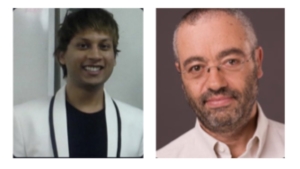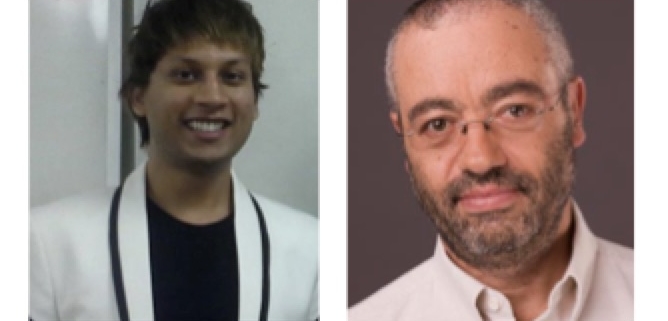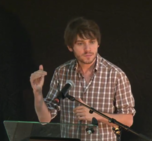Co-LOD: Continuous Space Linked Open Data

Mayank Kejriwal and Pedro Szekely
The following great innovative idea is from Mayank Kejriwal and Pedro Szekely from the University of Southern California. Kejriwal and Szekely were one of the Blue Sky Award winners at ISWC 2019 for their paper called Co-LOD: Continuous Space Linked Open Data.
The Idea
The Web has always been thought of as a collection of discrete elements; for example, the number of people with articles on Wikipedia, the number of likes for a post on Facebook, and so on. The collection of open, interlinked datasets (Linked Open Data) that forms the backbone of the Semantic Web is also discrete. However, modern deep learning and Artificial intelligence methods operate in continuous spaces or in the realm of real numbers. While there are several reasons why deep learning models work well, one reason is that they are able to automatically map discrete data (such as images with pixels, English sentences with words etc.) into continuous spaces and then reason about them in those spaces. So our idea was that, if we could somehow map Linked Open Data into a continuous space, we would enable powerful methods like deep learning to use the open data for solving multiple problems at once.
Impact
Eventually, the vision could be applied to the entire Web, ushering in a new era where deep learning and Web data complement each other in support of solving some of the most difficult problems in general Artificial Intelligence, including commonsense reasoning. We also believe there will be theoretical benefits from exploring the vision as a research community, since it may lead to a new, deeper understanding of semantics, and how continuous models of semantics can complement, and be complemented by, discrete models of semantics.
Other Research
Our research involves practical, and often large-scale, applications of knowledge graphs and AI to problems with real-world impact, including causal modeling, data cleaning, (helping law enforcement fight) human trafficking and crisis informatics. For example, we have transitioned work products to law enforcement that they have used to find and convict traffickers in the US. Our research has often found many users in the Semantic Web community, and some of our work is now starting to be recognized in the mainstream machine learning and data mining communities as well. Since our work is interdisciplinary, we tend to collaborate frequently with people across computer science and beyond, including theoretical machine learning, network and social science, and natural language processing.
Researcher’s Background
We are researchers in the Center on Knowledge Graphs at the Information Sciences Institute (ISI), which is a unit at the University of Southern California’s Viterbi School of Engineering. Dr. Pedro Szekely is the director of the group, and Dr. Mayank Kejriwal is a research lead in the group. As a research institute, ISI has a long history of innovation in AI and computer science. The Institute employs about 350 engineers, research scientists, graduate students and staff. About half of our researchers hold Ph.D.s, and about 40 serve as USC faculty. We are headquartered in Marina del Rey, California and have additional offices in Boston and Arlington, Virginia.










